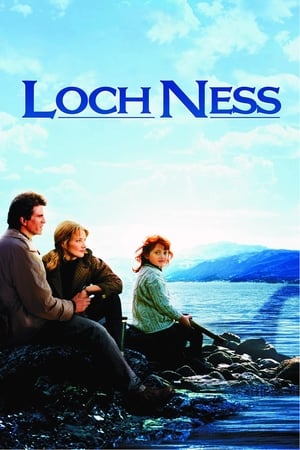
Loch Ness
Predictable? Yes. Innocuous? Yes. Spiritually potent? Absolutely. RELEASED IN 1996 and directed by John Henderson, "Loch Ness" explores the possibility of the Loch Ness monster, at least on the surface. Ted Danson plays a disillusioned cryptozoologist who is sent on assignment to Loch Ness, Scotland, to disprove the mythical creature's existence. With the assistance of a clairvoyant girl (Kirsty Graham) he discovers life-changing things. If you're remotely interested in cryptozoology "Loch Ness" is a must. Despite the fact that the story is predictable, this is a very well-made film. It was filmed in 1994 on location in Scotland and England. Although it was primed for theatrical release, and released as such in Europe, in America it was ultimately decided to release it on network TV in September, 1996. The film has a lot going for it: Danson is perfect as the jaded scientist; Joely Richardson is Beautiful; the little clairvoyant girl is cute and spiritual; the locations are continuously breathtaking; the people are likable and the story touches on important themes of which most can relate. If you're in the mood for a slasher/monster horror flick with lots of gore, this isn't the film to see. See "Beneath Loch Ness" (2001) or "Loch Ness Terror" aka "Beyond Loch Ness" (2008) instead. However, if you care to explore some of life's most vital questions, look no further. Danson’s character, Dr. Dempsey, has given up on love in the aftermath of a divorce; he's also given up on his life's work, his dream. He's a laughing stock in the scientific community. Note his powerful statement to his Scottish partner at Loch Ness: "I'm a joke. I'm the guy who chases looney tunes and you think I don't wanna find something out there? If I nailed a dinosaur in Loch Ness I would be vindicated a thousand times over. I would have it all back and more. But it's not gonna happen. There's nothing down there, there's nothing up in British Columbia, there's nothing unexplained flying around the skies at night. That's just a wish list to make us feel like there's something more to life than the $#*% we got stuck with." As you can see, the film is more than just cutesy family fare or mindless monster mayhem. The struggle Dempsey is going through is real and we can all relate to it on some level. We may not be looking for the Loch Ness monster, but we all have dreams; we all hope to discover love in some manner; we all hope to find meaning in life. Unless, of course, we've given up, like Dempsey in the story. Yet, even then, in the blackest pit of anguish & despair there's hope. There are two general views on life: (1.) That life and the universe are one big meaningless accident and you're just an insignificant bug that will soon be squashed out of existence and memory. And (2.) that there's an intelligent design to the universe and, although it's somehow “fallen” (severely messed up), there IS meaning, love, hope and purpose, even if we are presently unable to fully comprehend it. The film addresses the clash of these two opposing views. We've all experienced the conflict of these two positions within our OWN hearts; it's the clash of flesh and spirit. On the one hand, we WANT to believe the latter position, but life keeps dishing out so much crap that we are seriously tempted to give in to the former. This is the struggle Dempsey faces in the story. He's given up; he's stumbling in the darkness; he's just going through the motions to exist. His smile is mostly a facade. The little girl is a key factor in his potential deliverance. She is able to see things as they truly are, including beyond the areas of normal perception. Dempsey says seeing is believing, but the little girl insists that believing in unseen reality is more important than physically seeing, if you know what I mean. THE FILM RUNS 1 hour, 41 minutes. WRITER: John Fusco. GRADE: B+/A-
